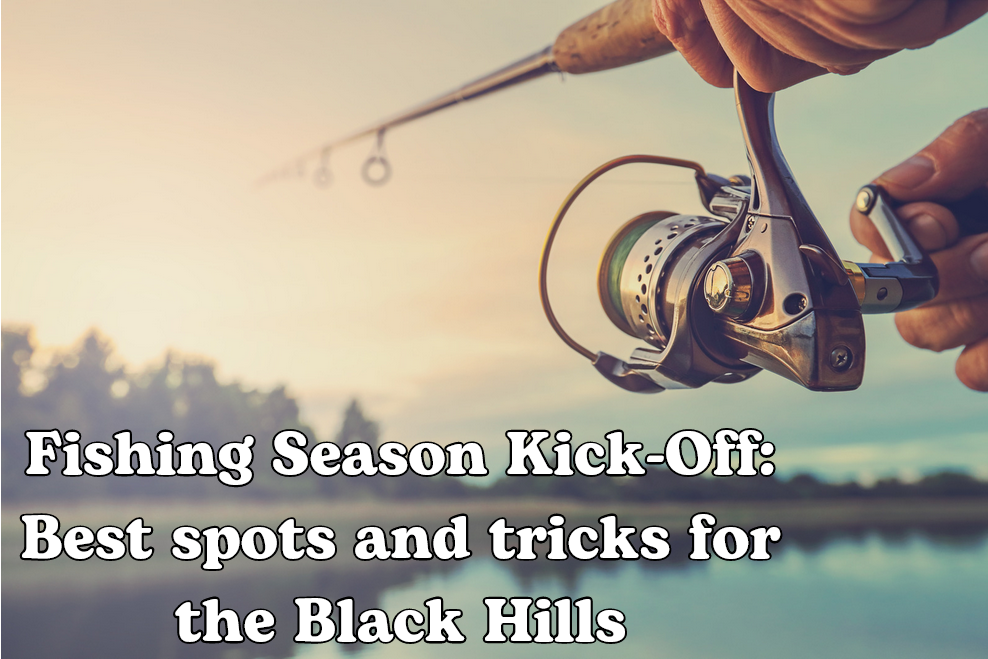– By #Powder House Lodge

As spring arrives in the Black Hills, so does the excitement of fishing season. With its stunning scenery and abundant waters, this region is a paradise for anglers. Whether you're a seasoned pro or just starting out, there's something here for everyone. Join us as we kick off the fishing season and discover the best spots to cast your line in the Black Hills.
Lake and Pond Fishing tips
When it comes to fishing with bottom baits, use a slip sinker with an 1/8-ounce egg sinker and a size six baitholder hook. To utilize worms effectively, either pinch or cut them in half before threading them onto the hook.
When opting for powerbait, favor shades like red, orange, or pink for optimal success in hilly areas. Take a small amount of putty, roll it into a marble-sized ball between your palms, and then encase the hook within the powerbait. For both techniques, cast your rod as far as possible and secure it against a stable surface. Reel in the slack line until the rod tip bends slightly, ensuring any bite, whether gentle or aggressive, is easily detected.
If bottom fishing proves unproductive, maintain the same rig but add a bobber positioned a foot or a few feet above the bait. This adjustment suspends your bait in the upper water column, catering to fish that may be feeding closer to the surface. For lure enthusiasts, consider spinners, spoons, jerkbaits, and spinnerbaits as versatile options capable of catching a wide range of fish In the hills.
Fly fishing success hinges on observing fish behavior and selecting flies that mimic natural insects. Some top-performing fly patterns in the Black Hills region encompass the Elk Hair Caddis, Adams, Stimulator, Dave’s Hopper, Hares Ear Nymph, Brassie, Zebra Midge, Wooly Bugger, Zonker, and the Clouser Minnow.
With these meticulously chosen baits and lures, your fishing endeavors are bound to keep your rod bent and a grin on your face.
River and Stream Fishing tips
Fishing in flowing water may pose a challenge for new fishers, yet several techniques mirror those used in Black Hills lakes and ponds. Fly fishing stands as the premier method for rivers and streams due to its adaptability across various fishing conditions. Originating from moving waters, fly fishing remains a favored approach in the Black Hills, with the patterns serving as ideal choices for streams you’ll be fishing in.
For those without fly fishing gear, two common methods come into play. The first involves using worms. Secure a size 8 baitholder hook to the line's end and affix a bobber approximately one and a half times the water's depth above the hook. Use two to three split shots spaced a few inches apart for weight. Cast upstream into the current, allowing the bobber to drift down slowly while reeling in slack. Any underwater movement or pause prompts a hook set.
The second method utilizes lures such as lightweight spinners, spoons, and soft plastic jigs, renowned for their effectiveness year-round. Cast upstream and let the lure drift back with the current, reel it across the river, or use a combination of both, intermittently reeling and pausing to animate the bait. Be prepared for an aggressive strike when a bite occurs. Target deep pools or eddies behind rocks and boulders, as these are prime locations where fish await their next meal.
Ensure to acquire a fishing license, obtainable online or at various license retailers and sporting goods stores. This requirement applies to both residents and non-residents aged 16 and older.
Residents under 16 can fish and retain a limit without a license, while non-residents under 16 are exempt if accompanied by a parent or guardian with a valid South Dakota fishing license, with the youth's daily and possession limits covered under the guardian's license.
For novices, consider visiting restaurants offering private fishing lakes where they cook your catch. These facilities negate the need for a license and provide all necessary equipment. Options include Trout Haven Resort or the Fish 'N Fry Campground in Deadwood.
Last Modified:
